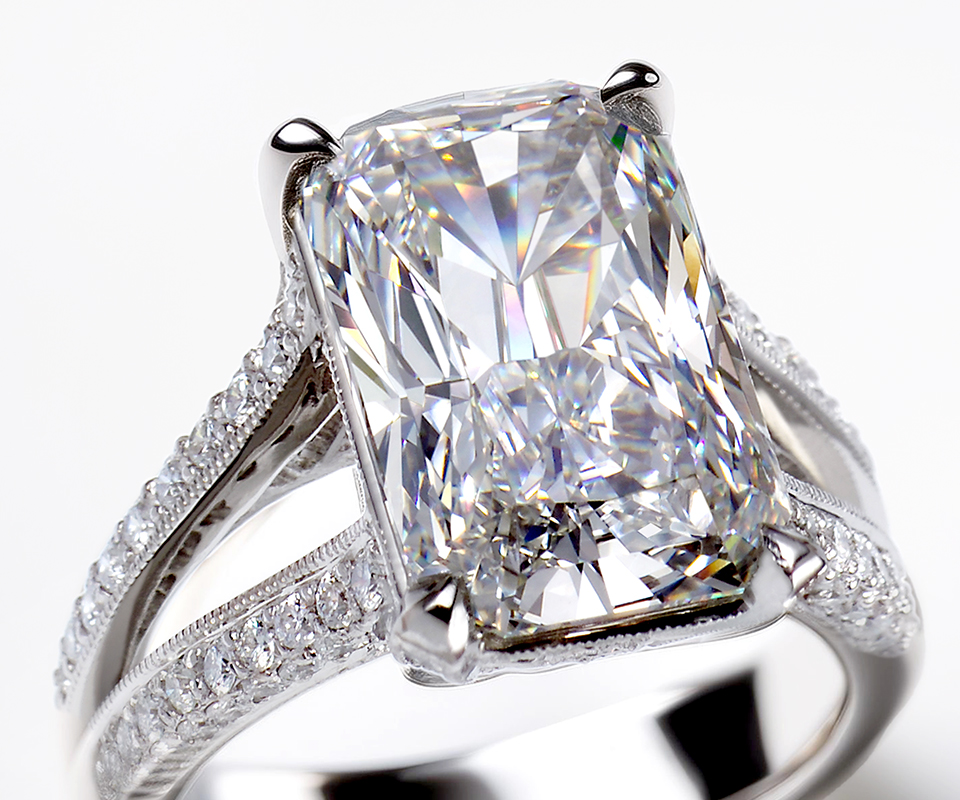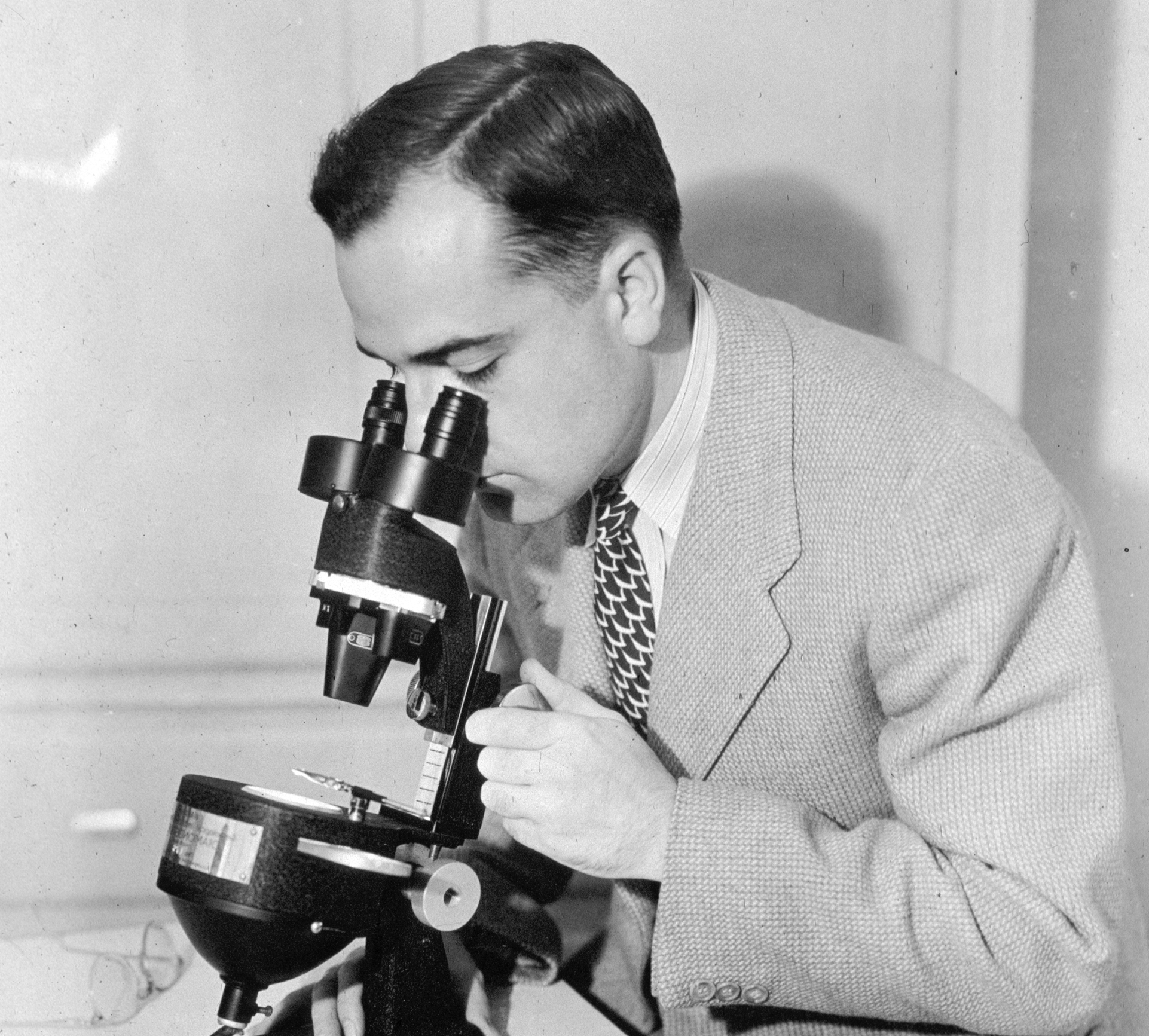Beauty is in the eye of the beholder. Quality is a matter of science.
Beauty is in the eye of the beholder. Quality is a matter of science.
Jewelry provided courtesy of The Clear Cut.
We wrote the book on diamond grading.
Our International Diamond Grading System™ is the global standard. As the home of gemological research and education, we invented many of the instruments used by the international gem and jewelry industry, and we even created the 4Cs of diamond quality.
Color, Clarity, Cut, Carat Weight. Today, the 4Cs scientifically ensure public trust in our industry.


We do not buy, sell or appraise diamonds.
Ask for a GIA report. If they don’t have one, ask for a new jeweler.
Education isn't expertise until it's evaluated.
A century ago, true expertise in diamonds, colored stones and pearls was rare. There were plenty of jewelers, but not with the level of formal training you’ve come to expect today.
Our founder, Robert M. Shipley would come to be known as an advocate for gemological expertise saying, “Like the physician, the architect and the engineer, the gemologist must complete prescribed studies and examinations in order [to be] of exceptional service to the public [in] the new profession of Gemology.”
In Wichita, KS during the great depression, Shipley was a well-known jeweler, but hardly the kind of expert he would come to advocate. As a charismatic businessman originally from Los Angeles, CA, he positioned himself as a jewelry expert, but it was his lack of expertise that started him on the path that led to the founding of GIA—the Gemological Institute of America.


Education isn't expertise until it's evaluated.
A century ago, true expertise in diamonds, colored stones and pearls was rare. There were plenty of jewelers, but not with the level of formal training you’ve come to expect today.
Our founder, Robert M. Shipley would come to be known as an advocate for gemological expertise saying, “Like the physician, the architect and the engineer, the gemologist must complete prescribed studies and examinations in order [to be] of exceptional service to the public [in] the new profession of Gemology.”
In Wichita, KS during the great depression, Shipley was a well-known jeweler, but hardly the kind of expert he would come to advocate. As a charismatic businessman originally from Los Angeles, CA, he positioned himself as a jewelry expert, but it was his lack of expertise that started him on the path that led to the founding of GIA—the Gemological Institute of America.


Where expertise ends, education begins.
In the roaring 20’s, Paris was the cultural, creative, and educational center of the world, and Shipley was drawn to the allure of the city of light.
In Paris, Shipley met his second wife, Beatrice, and a new opportunity to become a museum lecturer. The role would introduce him to both his love of teaching and also to gemology. He soon enrolled in gemological correspondence courses offered by Great Britain’s National Association of Goldsmiths.
The lack of gemological training and education available for a jeweler wasn’t just an American issue. Europe had the same problem. Seeing that the issue was widespread inspired Shipley to build a gemological educational system with universal standards.
The founding of an institute.
By 1934, he also founded the American Gem Society as a professional guild of knowledgeable jewelers, and Gems & Gemology, GIA’s research journal designed to share GIA’s expert knowledge with the world.
But his passion wasn’t limited to classes and journals, Shipley took his message to the highways, traveling mile after mile, to spread his spirited message for the global professionalization of the jewelry industry through gemological education.
After establishing the 4Cs of diamond quality, and spreading his message globally, Robert M. Shipley retired from GIA in 1952. Shipley’s influence would be felt for generations to come. Richard T. Liddicoat took over in 1953, continuing the work and legacy that Shipley began.


The founding of an institute.
By 1934, he also founded the American Gem Society as a professional guild of knowledgeable jewelers, and Gems & Gemology, GIA’s research journal designed to share GIA’s expert knowledge with the world.
But his passion wasn’t limited to classes and journals, Shipley took his message to the highways, traveling mile after mile, to spread his spirited message for the global professionalization of the jewelry industry through gemological education.
After establishing the 4Cs of diamond quality, and spreading his message globally, Robert M. Shipley retired from GIA in 1952. Shipley’s influence would be felt for generations to come. Richard T. Liddicoat took over in 1953, continuing the work and legacy that Shipley began.
Research. Educate. Protect.
At the center of Shipley’s vision was the duty to restore public trust in the gem and jewelry industry. That same vision drives the Gemological Institute of America today.
The influence and impact of Shipley’s dedication to gemological education, innovation and transparency continues to shape our global industry, as we carry on his mission to educate the industry and most importantly, protect the consumers.
Expertise at your fingertips.
You don’t need to be a gemologist to purchase a diamond with confidence. You just need to know where to find one.
GIA is the trusted benchmark for diamond grading. Download the GIA App now to learn more about the 4Cs and look up GIA reports.


Expertise at your fingertips.
You don’t need to be a gemologist to purchase a diamond with confidence. You just need to know where to find one.
GIA is the trusted benchmark for diamond grading. Download the GIA App now to learn more about the 4Cs and look up GIA reports.
Expertise at your
fingertips.
You don’t need to be a gemologist to purchase a diamond with confidence. You just need to know where to find one.
GIA is the trusted benchmark for diamond grading. Download the GIA App now to learn more about the 4Cs and look up GIA reports.
GIA Report Check
Access your GIA Grading Report results using your GIA report number.